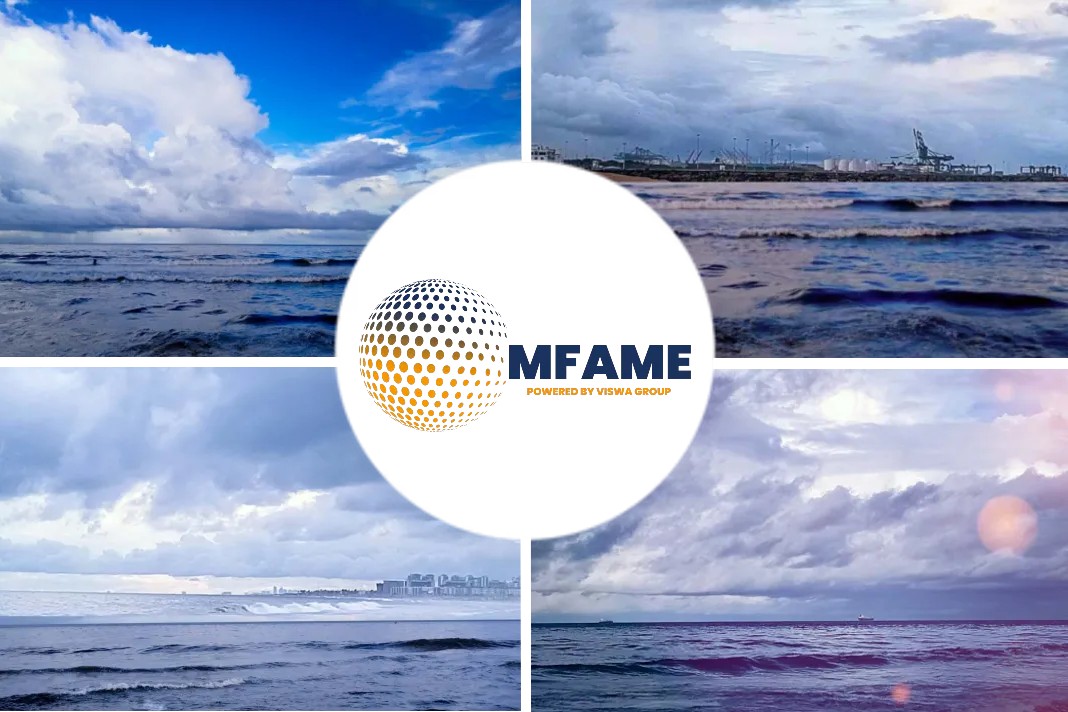U.K. soccer star David Beckham was known for “bending” his free kicks over walls of defenders and around sprawling goal tenders. Now, the physics behind such curving kicks is set to be used to propel ocean ships more efficiently.
Early next year, a tanker vessel owned by Maersk, the Danish transportation conglomerate, and a passenger ship owned by Viking Line will be outfitted with spinning cylinders on their decks. Mounted vertically and up to 10 stories tall, these “rotor sails” could slash fuel consumption up to 10%, saving transportation companies hundreds of thousands of dollars and cutting soot-causing carbon emissions by thousands of tons per trip.
Rotor sails rely on a bit of aerodynamics known as the Magnus effect. In the 1850s, German physicist Heinrich Gustav Magnus noticed that when moving through air a spinning object such as a ball experiences a sideways force. The force comes about as follows. If the ball were not spinning, air would stream straight past it, creating a swirling wake that would stretch out directly behind the ball like the tail of a comet. The turning surface of a spinning ball, however, drags some air with it. The rotation deflects the wake so that it comes off the ball at an angle, closer to the side of the ball that’s rotating into the oncoming air. Thanks to Isaac Newton’s third law that every action must have an equal and opposite reaction, the deflected wake pushes the ball in the opposite direction, toward the side of the ball that’s turning away from the oncoming air. Thus, the spinning ball gets a sideways shove.
In the early 20th century, scientists proposed using the Magnus effect to propel ships. German engineer Anton Flettner replaced 420 square meters of sail cloth on the schooner Buckau with two 15-meter-tall steel rotor sails, which were set spinning using a small engine. Flettner showed that wind traveling around the Buckau’s rotor sails created a force on the sides of the rotor sails that propelled the ship forward. In 1926, the Buckau crossed the Atlantic Ocean. However, Flettner failed to find investors interested in rotor sail–powered ships. Fuel prices were simply too low and there were no environmental regulations limiting ship emissions.
But the economic breeze may be freshening for sail power. Today, more than 90% of goods are carried over the ocean, and the Chinese port of Shanghai alone saw 36 million containers pass through in 2015. All that commerce comes at an environmental price: Most vessels burn heavy fuel oil, producing heat-trapping carbon dioxide as well as soot and sulfur compounds that contribute to acid rain. “The shipping industry is under increased pressure to reduce emissions,” says Tuomas Riski, CEO of Norsepower Oy Ltd., a clean technology and engineering company headquartered in Helsinki.
Norsepower has developed a rotor sail based on Flettner’s original design but updated with modern materials such as carbon and glass fibers that cut its weight by a factor of three. That means less electricity is required to spin the rotor, which translates into more efficient propulsion. “Our largest rotor sails can provide forward thrust equivalent of up to 3 megawatts of main-engine power while drawing less than 90 kilowatts of electricity,” Riski says. Norsepower’s design is also linked to software that adjusts a rotor’s rate of rotation—up to several hundred revolutions per minute—to maximize forward thrust. “It’s fully automatic and simple to use,” Riski says.
The technology also should be safe, as cutting electricity to the rotor stops the propulsion and leaves only a drag force. And that drag force is probably much less significant than the drag the ship’s hull experiences moving through water, says Jeff Eldredge, a fluid dynamicist at the University of California, Los Angeles. Michael Traut, a physicist at the University of Manchester in the United Kingdom, says “There’s no risk of capsizing the vessels.”
Rotor sails are generally effective if the wind is moving faster than 18 kilometers per hour—roughly 10 knots—and is blowing across the ship’s bow at an angle of at least 20°. Ships often encounter such conditions on northern Pacific and northern Atlantic shipping routes, Riski says. Unlike Flettner’s original rotor sails, the new versions are intended to only provide supplemental thrust rather than entirely replace a ship’s engine, Riski says.
In 2015, Norsepower conducted the first at-sea tests of its rotor sails on a cargo ship that carries cars and trucks between the Netherlands and the United Kingdom. When retrofitted with two 18-meter-high rotor sails, the ship burned 6% less fuel. Next year, after Norsepower installs rotor sails on an oil tanker and a passenger cruise ship, “we’ll have all of the main ship types covered,” Riski says. Container ships are not a good fit for rotor sails because their decks are stacked with containers, he notes.
Time will tell whether this new take on old technology is successful. “One of the drawbacks of Flettner’s original rotors was that the power required to rotate them was too significant to make them practical,” Eldredge says. But with novel materials that problem might be solved, he says. Still, he says, “It remains to be seen whether we’ll be seeing a bunch of cargo ships with Flettner rotors.”
Did you subscribe for our daily newsletter?
It’s Free! Click here to Subscribe!
Source: Science | AAAS



















